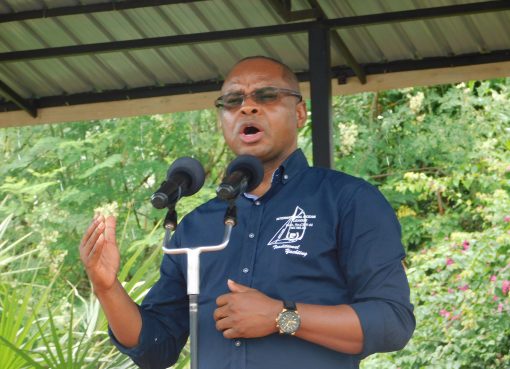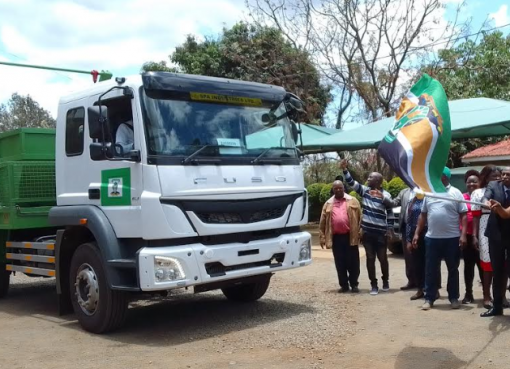In the picturesque landscapes of Elgeyo Marakwet County, nestled within the embrace of the Kerio Valley, a quiet revolution is taking root.
This time, it’s not the sorghum that once adorned the fields, but a new hope sprouting from the cotton plants that are set to blanket over 4000 acres of fertile land.

The county is rallying behind a resurgence in cotton production, aiming to breathe life back into an industry that has long lain dormant.
Governor Wisley Rotich stands at the forefront of this endeavour, his vision clear as he addresses the eager farmers of Endo, Arorr, Lower Sambirir, Soy South, Soy North, Lower Tambach, and Lower Emsoo wards.
“We just tried sorghum last season, and the harvest was commendable. We are going to enrol farmers from Endo, Sambirir, Arror, Emsoo, Tambach, Soy North, and Soy South into cotton production. We already have a ready market as Rivatex is looking for raw materials,” remarked Governor Rotich, his voice tinged with optimism.
Rotich’s enthusiasm is well-founded, as the resurgence of cotton farming in the region has garnered significant support, notably from Rivatex, one of Kenya’s leading textile manufacturers.
Rivatex Managing Director Thomas Kipkurgat affirmed their commitment and readiness to purchase cotton directly from local farmers.
This assurance follows the national government’s allocation of 60,000 tonnes of seeds, a boon for 24 counties, including Elgeyo Marakwet.
However, the journey to rejuvenate cotton farming hasn’t been without its hurdles, as farmers have grappled with challenges ranging from a lack of ready markets and quality seeds to the exorbitant costs of inputs and exploitation by middlemen.
Addressing these issues head-on, the County Chief Officer of Agriculture, Edwin Komen, emphasised the importance of data collection to streamline the distribution of resources effectively.
“As we embark on this transformative journey, we must have a clear understanding of the landscape,” Komen asserted.
“Data collection will enable us to tailor our interventions to meet the specific needs of our farmers,” he added.
Last week, a pivotal meeting took place as an advisory team from the Office of the President visited the county to deliberate on cotton production.
Henry Kinyua and Moses Banda, representing the presidential office, underscored the significance of the cotton value chain as a potential linchpin for the county’s economic resurgence.
“We believe that investing in the cotton sector will not only bolster agricultural productivity but also create sustainable livelihoods for our communities,” remarked Kinyua, echoing the sentiments of many stakeholders.
To ensure the seamless implementation of their vision, the county authorities are leveraging the power of collaboration.
Cooperatives CEC Robert Kangogo unveiled plans to mobilise farmer cooperative societies in the seven wards to facilitate the registration process.
“Our cooperative networks will serve as the bedrock for fostering community participation and ensuring equitable access to resources,” Kangogo elucidated.
As preparations for the forthcoming cotton season gain momentum, the anticipation among local farmers is palpable. In anticipation of the long April rains, plans are underway to distribute seeds to farmers across the designated wards.
Governor Rotich reiterated the county’s commitment to transparency and inclusivity in the distribution process.
“We want every farmer to have an equal opportunity to participate in this transformative venture,” Rotich affirmed.
He divulged that 10 farmers in the Kerio Valley region participated in the trial of the cotton Hybrid C571 farming, which was successful, thereby solidifying the need to venture into large-scale cotton farming.
Amidst the buzz of preparation, there is a sense of cautious optimism permeating the agricultural landscape of Elgeyo Marakwet. For many, cotton farming represents not only a means of sustenance but also a beacon of hope for a brighter future.
As the sun sets over the undulating plains of the Kerio Valley, casting a golden hue upon the fields, one cannot help but feel a sense of renewed vitality coursing through the soil.
In the quiet determination of its people and the fertile promise of its land, Elgeyo Marakwet County stands on the cusp of a new dawn, one where cotton reigns supreme, ushering in an era of prosperity and abundance.
By Rennish Okong’o




